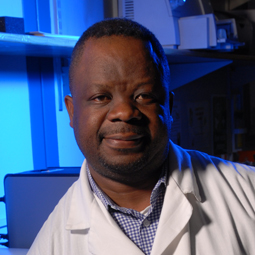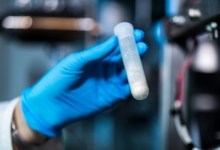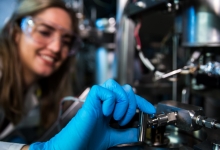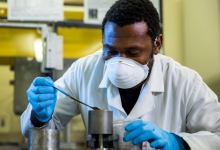Advanced functional materials
The CSIR’s Advanced Functional Materials research group designs and develops functional materials including active particles, biomaterials, nanostructures and functional biopolymers from sustainable raw materials. The group also designs and develops conversion processes to transform the materials into advanced products.
With key infrastructure, researchers have been able to demonstrate their capability in pharmaceuticals, nutraceuticals, cosmeceuticals, encapsulated bio-pesticides and controlled release fertilisers.
Platforms
Functional Polymers platform
The Functional Polymers research platform was established to develop local capabilities in biodegradable polymers synthesis and functionalisation of polymers into advanced materials, ranging from biomedical and pharmaceuticals to packaging. Research, development and innovation (RD&I) activities focus on supporting industrialisation and technology localisation for South Africa and the wider African continent.
The platform was established at a time when environmental consciousness of anthropological activities were approaching a crescendo and many parts of the world were seeking socially responsible use of materials like plastics. While demands for biodegradable plastics was growing, the African continent had no concerted research into or industrial sector in biodegradable polymers. The CSIR’s Functional Polymers research group is pioneering this effort on the continent.
To extend the portfolio of applications, the CSIR also explores the development of novel polymeric materials by chemical functionalisation. The main activities in this area are the development of pharmacologically active and antimicrobial polymers.
The CSIR’s Functional Polymers platform is proving valuable in the following areas:
Pharmacologically active polymers
The greatest burden of infectious diseases is borne by African countries. Infectious biological agents are notorious for rapid drug resistance, but new drug discovery is lethargic. The drugs used to treat the most significant of these diseases that predominantly afflict the poor (malaria, tuberculosis and AIDS) show significant systemic toxicity profiles and other pharmacological inadequacies that retard strict regimen compliance by patients. Nanomedicine technologies exist to address these challenges for non-infectious diseases like cancer, but with limited application to infectious diseases.
The CSIR has therefore developed polymer conjugates of the antimalarial drugs primaquine, dihydroxyartemisinin, lumefantrine and the anti-tuberculosis antibiotic moxifloxacin. Some of these conjugates have shown significantly improved clinically relevant properties and progress is being made towards pre-clinical testing and eventual commercialisation. Funding for this research has been from public and private sources and internationally from the World Health Organization.
Antimicrobial polymers
It was always expected that microbes would once more become problematic in the twenty-first century after the tremendous success of controlling them with antibiotics and immunisation for most of the twentieth century. The greatest threat was expected from a loss of antibiotic effectiveness due to drug resistance from bacteria by mid-century. Although the world has been blind-sided by the COVID-19 pandemic, the threat to global health from an impotent antibiotics arsenal is still real and looming. African countries are among the most vulnerable.
CSIR research therefore, has been directed at developing non-therapeutic polymeric antimicrobial materials that could be used to alleviate the reliance on antibiotics to control bacteria, especially in our environment. The group has researched and developed new biopolymer-based antimicrobial materials designed to induce an inertial effect in bacterial. These materials could be incorporated into coatings for high-infection surfaces as would be found in hospitals and as fabric and textile materials. Chitosan is used as a platform biopolymer in this project for its amenability to chemical functionalisation, natural abundance and biodegradability. Some of the materials have also attracted commercial interests.
Delivery Systems platform
Delivery systems for various therapeutics can be developed to achieve a number of objectives. These include structuration of compounds that are normally difficult to administer due to factors such as poor absorption, volatility, reactivity, hygroscopicity and physical state. Delivery systems may also serve the role of protecting the therapeutic to prevent degradation due to external environmental factors such as oxygen, light, heat, and humidity, which could destroy any labile compound. Protective delivery systems may also be required when orally administering a therapeutic, due to exposure to the harsh conditions of the upper gastrointestinal tract.
The Delivery Systems platform focuses on the development of delivery systems to convert/transform bio-based chemicals, bioactives and biomaterials into advanced high-value products. This platform has capabilities in:
- Solvent-free supercritical CO2-based encapsulation processes
- Nanoparticles and hybrids
- Conjugates
- Nano/micro emulsions and spray-drying
- Delivery systems technology platforms






